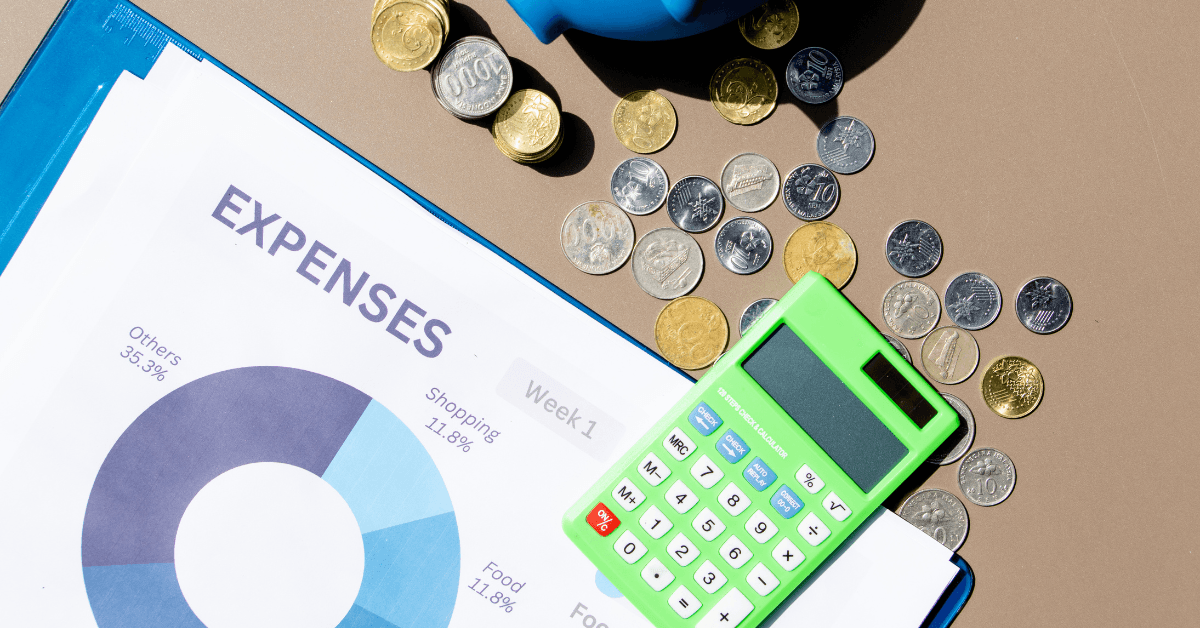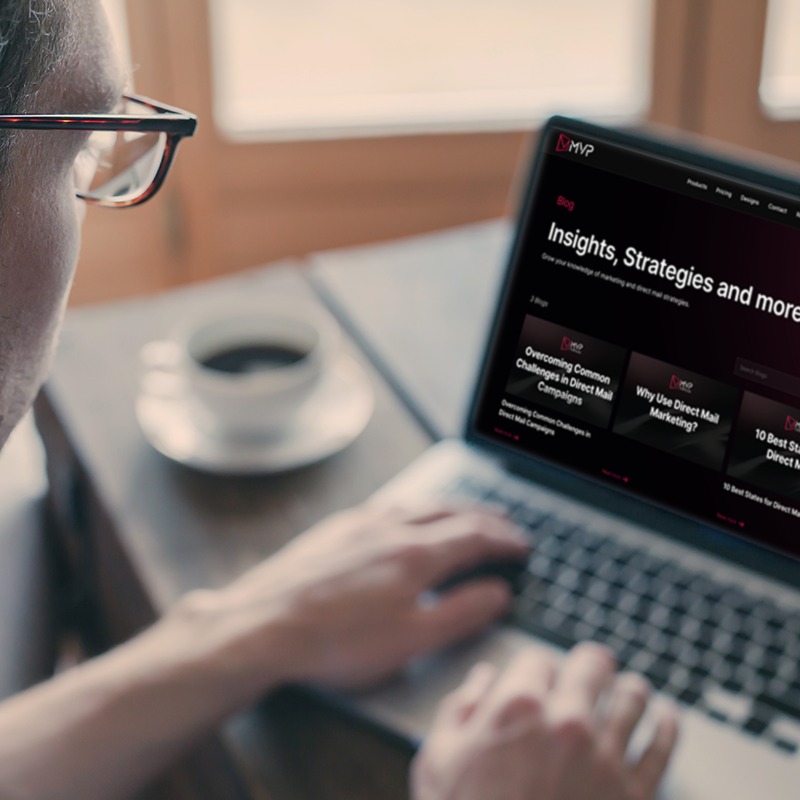Is Direct Mail Too Expensive for Small Business?
Is direct mail too expensive for small businesses? Learn how affordable, high-ROI mail campaigns boost growth and trust. See real results. Start today!

For many small business owners, the question “is direct mail too expensive for small business?” comes up the moment they consider adding physical mail to their marketing mix. At first glance, printing and postage might seem costly compared to digital ads. However, the truth is more nuanced.
When executed strategically, direct mail marketing can be one of the most cost-effective and profitable tools in a small business’s marketing arsenal.
Unlike digital campaigns that often drown in online noise, direct mail cuts through the clutter — reaching customers’ hands and homes directly. For local businesses, such as dental practices, gyms, real estate offices, and service providers, tangible mail still drives trust and response rates that digital simply can’t match. Before dismissing it as “too expensive,” it’s essential to understand the real costs, value, and ROI potential of direct mail marketing.
Understanding Direct Mail Marketing Costs
Direct mail marketing isn’t just about sending postcards, it’s about strategy, precision, and timing. To really know what you’re paying for, you have to look beneath the surface. Every campaign has layers, and each one shapes the total cost.
Let’s break it down.
Design & Creative Work
This is where the magic starts. A good design grabs attention; a great one drives action. Smart visuals, persuasive copy, and a clear call-to-action can transform a simple mailer into a response machine. Yes, professional creative work costs more but it’s the difference between being noticed and being ignored.
Printing
Not all mailers are created equal. A glossy postcard? Affordable, quick, effective. A multi-page catalog? Richer, heavier, and pricier but perfect for showcasing multiple offers. Paper thickness, finish, and quality all play a role. The better it feels, the better your brand looks but you’ll pay a bit more for that premium impression.
Mailing List
You can’t market to everyone and you shouldn’t. A strong mailing list means your message lands in the right hands. Whether you’re renting a list or using your own database, segmentation matters. The more accurate your targeting, the less money you waste and the more results you see.
Postage & Distribution
Here’s the wildcard. Postage is often the biggest variable cost. It changes with mail class, size, weight, and volume. USPS offers discounts for bulk mailings, so the more you send, the less you pay per piece. Businesses mailing thousands of items can see major savings here.
Now, the beauty of direct mail? Flexibility.
You can scale it to fit any budget. A small dental clinic might mail simple postcards for a whitening special, low cost, local impact. Meanwhile, a retailer might go bigger with folded brochures, showcasing seasonal deals across a region. The format follows the goal.
Want numbers? Here’s the range.
Direct mail typically costs $0.50 to $3.00 per piece. That includes design, printing, postage, and list costs. Sounds high compared to a digital ad click? Maybe. But here’s the twist, direct mail pulls response rates 5 to 9 times higher than most online campaigns. It’s not just seen, it’s felt, held, remembered.
According to Focus Digital, direct mail campaigns average a 3.63% response rate, far exceeding most online channels — proving that direct mail’s cost is justified by its performance.
If you’re wondering about specific pricing ranges, our article on how much direct mail costs provides a breakdown of what businesses typically spend based on format and volume.
In short: direct mail costs more to send, but it delivers more back. That’s the power of something tangible.
Comparing Costs: Direct Mail vs. Digital Marketing
Digital marketing looks cheap at first. A few cents for an email send. Pennies for an ad click. Seems like a no-brainer, right? But hold on, those numbers don’t tell the whole story. Cost alone doesn’t equal value. You have to look at what actually works, how long it lasts, and what kind of return it brings.
Digital channels move fast. You hit “send,” and boom, your message is out there. But the results? Not so impressive. Most emails? Unopened. Only about 21% get read, and clicks drop even lower. Meanwhile, direct mail quietly outperforms with open rates nearing 90%. That’s not just visibility, it’s real attention.
And here’s something people forget: longevity. Emails disappear in seconds. Deleted, ignored, buried. A postcard, though? It lingers. On a desk. On a fridge. On a bulletin board. It keeps working long after that first glance.
Then there’s trust. When something arrives in your hands something you can feel, it carries weight. Especially in personal industries like dentistry or real estate. A physical mailer feels real. Humans. Thoughtful. It says, “We care enough to show up.”
Take a dental office, for instance. Sure, mailing postcards costs more upfront than sending a thousand emails. But one postcard might bring in a patient worth hundreds, even thousands, in lifetime value. That’s not an expense, it’s an investment.
In truth, you don’t have to pick sides. Direct mail and digital marketing can work hand in hand. Digital gives you precision. Mail gives you presence. Together, they form a strategy that’s hard to beat one that reaches screens and doorsteps.
Want to dive deeper into how direct mail became a smart, data-driven powerhouse? Check out The Evolution of Direct Mail.
Why Direct Mail Isn’t Too Expensive (When Done Right)
At first glance, direct mail looks pricey. You see the printing, the postage, the prep and suddenly, it feels like more than your marketing budget can handle. Compared to digital ads or social media boosts, it seems old-fashioned and costly. But here’s the truth: that’s only the surface. When it’s done with purpose, direct mail can beat those digital channels in ROI, in lead quality, and in long-term customer value. It’s not about spending more. It’s about spending smart.
Think about who you’re mailing to. That’s where the magic happens. Sending mail to everyone in town? Wasteful. Sending it to the right people? Powerful. Picture this: a dental clinic focuses on a single ZIP code, selects households with kids, or targets income brackets that fit their ideal patients. That kind of precision turns every dollar into a strategic hit. No crowded feeds. No skipped ads. Just a clear message delivered directly to the people who actually care.
And let’s talk about touch. Digital ads disappear in a blink. A postcard doesn’t. It sits on the counter. It gets pinned to the fridge. It’s real. Tangible. Trustworthy. A letter in your hands says, “This business is legitimate.” It feels personal in a way pixels never can. Combine that physical presence with smart design and a bold call-to-action, and you’ve got attention that lasts longer than a scroll.
You also don’t need to go big to win big. Start with 500 mailers, that’s plenty to learn what works. Use a QR code. Add a tracking number. Set up a custom URL. Suddenly, you’re not just sending mail, you’re gathering data. You can see who responded, what they liked, and where to tweak your next round. That’s marketing intelligence disguised as postage.
When done right, direct mail flips the script. It’s not an expense; it’s an investment that multiplies. It fuels repeat business, drives conversions, and builds brand trust sometimes outperforming digital altogether. The secret isn’t how much you spend, but how you spend it. Smart strategy. Sharp targeting. Clear tracking.
And when you nail all that? Direct mail doesn’t just pay for itself, it pays you back, over and over again. For a comprehensive look at how to structure a successful campaign, explore Direct Mail Best Practices to a Success Campaign.
Calculating ROI: Direct Mail for Small Business
Direct mail is one of those rare marketing tools that gives you clarity. Every dollar has a destination. Every result has a source. Unlike digital ads where costs rise and fall with algorithms, direct mail stays steady, predictable, and measurable.
But how do you know if it’s working? Simple. You calculate ROI.
To do that, focus on three things:
- Total Campaign Cost: Count everything. Printing, design, postage, list rental, revisions, even data cleanup. If it costs you time or money, it belongs in the total.
- Revenue Generated: How much money did the campaign bring in? Track it. Use custom offer codes, landing pages, or phone numbers so you can link each sale or lead directly back to the mailer.
- Response and Conversion Rates: Who took action? Who didn’t? Whether it’s calls, appointments, or purchases, these numbers show how well your message connects with your audience.
Now, let’s put it into perspective.
A small dental clinic mails 2,000 postcards. Total cost: $2,000. They gain 25 new patients, each spending $150 on their first visit. That’s $3,750 earned an 87% ROI. Not bad. But here’s the kicker: if even half those patients come back twice a year, the lifetime value soars. The campaign’s impact multiplies far beyond the first visit.
ROI isn’t just a percentage. It’s a story of growth. The more you refine your audience, test your message, and optimize your design, the lower your costs per response. Profits rise. Campaigns evolve from trial runs into trusted systems. You can learn more about measuring success in our guide on How to Calculate ROI from Your Direct Mail Campaign.
Compare that to Google Ads or social media campaigns where a single click might cost $5 to $20 and still not convert. Direct mail, on the other hand, lands directly in your customer’s hands. No ad blockers. No endless scroll. Just a message they can touch, hold, and remember.
And that matters.
In a world drowning in screens, a well-crafted postcard feels personal. It stands out. It’s real. For small businesses, that tangibility builds trust and trust drives ROI higher than algorithms ever could.
Direct mail isn’t old-fashioned. It’s reliable. It’s measurable. And when used right, it becomes your most consistent growth engine.
Tips to Make Direct Mail More Cost-Effective
Direct mail works. It’s trusted, tangible, and delivers real results. But let’s be honest, every campaign comes with a cost. The key is making sure every dollar stretches further, every postcard pulls its weight, and every envelope earns attention. With the right approach, you can boost performance and protect your budget.
Here’s how to make your direct mail smarter, leaner, and more profitable.
1. Start Small, Then Grow Smart
Don’t blast out thousands of pieces right away. Begin with a tight, focused audience. Measure what happens, response rates, conversions, ROI, all of it. Then, adjust. Maybe your offer needs a tweak. Maybe your design could pop more. Once you’ve got something that clicks, then scale. That’s how you spend wisely and win big.
2. Pick Formats That Punch Above Their Weight
You don’t need fancy folds or oversized mailers to get noticed. Simple works.
Postcards? Fast to design, light to ship, and visually bold. Letters? More room for your story, your offer, your pitch.
Choose based on your goal, awareness, leads, or direct sales. The best format isn’t the flashiest one, it’s the one that delivers. Learn more about which format suits your goals in our article on Types of Direct Mail.
3. Save Big with Bulk Mailing
Postage. It’s where most of your money goes. Good news? You can slash those costs. Programs like USPS Every Door Direct Mail (EDDM) or presorted bulk discounts make a massive difference. Send in batches, follow postal prep rules, and watch your savings pile up. Targeting nearby neighborhoods or ZIP codes? Even better.
4. Trim the Fat: Refine Your Audience
Don’t mail to everyone. Mail to the right ones. A tight, segmented list almost always beats a massive, generic one. Focus on people near your location, past customers, or high-probability prospects. The smaller the list, the stronger the results. Fewer wasted mailers. More engagement. More repeat buyers.
5. Combine Direct Mail with Digital Power
Direct mail doesn’t live in a vacuum, it thrives in synergy. Follow your mail piece with a retargeting ad. An email. A personalized landing page. When someone sees your message across multiple channels, they remember it. They trust it. And they act on it. That’s how you multiply your impact without multiplying costs.
Smart Doesn’t Mean Cheap
Cutting costs isn’t about cutting corners, it’s about cutting waste. When you merge data-driven targeting with cost-efficient mail practices and digital integration, your direct mail becomes unstoppable. Every piece earns its keep. Every campaign pays off.
Want to go further? Check out our next article: How to Improve Your Direct Mail ROI.
Conclusion
So, is direct mail too expensive for small businesses? The answer is a confident no, not when it’s executed strategically. While the upfront cost may appear higher than running a digital ad campaign, direct mail consistently delivers stronger engagement, higher trust, and better ROI for local businesses that value long-term customer relationships.
When you understand the true costs of direct mail, it becomes clear that affordability depends less on price per mailer and more on the strategy behind it. By focusing on targeted lists, professional design, and measurable tracking, even the smallest businesses from local dental offices to family-owned retailers can turn mail campaigns into reliable growth channels.
Compared to digital ads that vanish in crowded feeds, direct mail stays visible. It lands in your customer’s hands, builds credibility, and often drives higher conversion rates. And when you combine it with digital marketing for retargeting or follow-ups, your campaign impact multiplies.
If you’re new to direct mail or looking to refine your existing strategy, now is the perfect time to explore the possibilities. Visit MVP Mailhouse to learn more about affordable direct mail marketing solutions for small businesses, or schedule a demo to see how we can help you plan, execute, and measure your next high-ROI campaign.
Your next big opportunity to grow might not be in an inbox, it might be in the mailbox.
Tags
Frequently Asked Questions
Related blog



